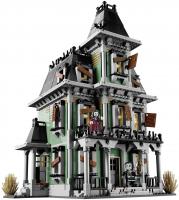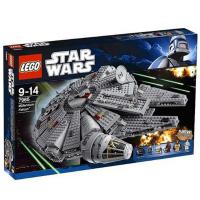
This abundance of what everyone sees as amazing deals has an effect that can be both positive or negative, depending on the individual investor that happens to read them. On one hand, seeing those kind of prices can move the investor to a more active deal searching strategy that can pay off big if they are diligent and insistent. On the other, there is a chance that a particular investor looking for clearance deals is spending more money and time looking for deals than it is worth it to them.
Why could these two scenarios be so different? well, there are several variables that impact an investor's ability to find good deals. The following are just some of them:
Investor's location: It is no secret that the best deals are often founds in either smaller towns or "low income" neighborhoods. Finding good deals in the larger cities is extremely difficult, both for the sheer amount of people concentrated around the stores and for the variety and, usually, abundance of middle to high income families. Investor's effort: It can't be denied that someone who tries harder is more likely to find good discounts than someone that only makes an occasional trip to the large retailers. Having said that, as we will see later this is not necessarily a good or bad thing in and on itself. Store policy: Most of the time, the decision about what items to clear from the stores is left up to each store's manager. There is not much the investor can do about this point, just get to know the local store policy and maybe get to know the employees. To me, those three are the most important factors that result in an investor being able to find or not clearance deal in their particular location.
Having laid this out, I want to get to the real point of this article: Is hunting for clearance deals really cost efficient and rewarding both short or long term?. There is no clear answer to this question, as each investor is different and has a different strategy and resources. When I was writing my Cost of LEGO investing articles, I got to see first hand the financial impact hunting for clearance deals in stores can have on the investor's bottom line, so in here I would like to isolate that topic in particular and determine who can benefit and who can't with this strategy.
For the mentioned article, I used the AAA estimated cost per mile to drive a vehicle in the US as a way to know what is the price of driving around from store to store on any given day. Adding to that, there is definitely the cost of the investor's time that could be spent doing something else, but since that is really dependent on each individual there is not really a good number I could use that applied to everyone, so just know that we are keeping that out of the equation.
AAA's estimate cost per mile driven is somewhere around $ 0.61. This cost is inclusive of gas as well as pretty much every single cost that is included while driving like insurance, repairs, etc. So. let's examine several different scenarios using only one set as our main example. Let's base our numbers on 9474 Helm's Deep and use several different investor profiles.
Scenario 1: The investor drives 15 miles to the local Target/Walmart and finds Helm's Deep on clearance for $ 80. Purchase: 2 Sets. (Taxes are ignored)
Scenario 2: The investor drives to the same store, but this time acquires 5 sets, all of the ones that are available on the shelf.
You can clearly see that, logically, the more sets the investor purchases the more the fixed cost of driving is spread out. As a result, the investor buying in larger quantities actually benefits greatly from the clearance price, while the small buyer gets a price that is not much lower than what we have seen on the set at some points.
Now, this analysis leave something out of the picture: it assumes both investors did only one trip to the retailer and found the set on clearance on their very first try. We all know this is extremely unlikely, and even if it were to happen it is very hard that this could be the case every single time the investor visits the store. Usually, investors make several trips to the stores where they find absolutely nothing worth purchasing, so let's add those costs to our analysis.
Scenario 3: The investor drove to the store two times before scoring the deal explained above, and purchased the 2 sets on his third visit.
Here you have it. If the investor drove three times back and forth between his home and the local retailer and bought the two discounted sets at $ 80, the ending cost of each set is almost $ 110. We have seen the set at around this price point several times on different online retailers. Scenario 4: Same as Scenario 3, but this time the investor bought 5 sets on the third visit.
Once again the large investor gets a better deal. Having said that, I think it is pretty evident that the potential costs are very sensitive and can add up quickly in both cases with each individual visit to the store. The moment the investor visits the store more than 4 or 5 times without finding a deal, the more costly those purchased sets will become. In a lot of cases, the actual cost of the set may very well end up being more than its MSRP. Also, keep in mind that we are ignoring the cost of the investor's time in the scenarios above.
Even if you only consider gas as your only driving cost, something that is not accurate, the cost of driving a total of three times to a store located 15 miles away from your home will add around $ 10 to the total cost of your sets (assuming 30 MPG).
What this analysis tells us is that most investors from this site will get better results by purchasing the sets online and browsing the different sites for good deals rather than spending the time and money driving around the stores. Of course, there are some investor that can benefit from hunting for clearance deals:
An investor who knows their local market extremely well and scores deals in most of his visits. Brickpicker member Lowest Form Of Wit has several times posted how he is able to visit his local stores (especially Walmart) and get at least one great set for a great price. This does not mean everyone can do it, it just happens that his area is good for LEGO hunting and he has been able to capitalize on that opportunity. High volume investors: As proven above, those investor that have the resources to invest in several copies of the same set are the ones that would benefit the most from hunting local deals. By purchasing as many sets as available at clearance price they are able to spread out the fixed costs of driving among a large amount of sets, therefore making it worth it. If you fall into any of the two categories above, you could continue with your deal hunting strategy as you see fit, always keeping in mind all the costs involved. If you are a different investor than these two types, you are better served spending your time hunting for deals online instead of hunting for that 50% deal that once you factor in the cost of the times you did not find anything can end up being equivalent to a 5% discount....or even to paying above MSRP!
- Read more...
- 19 comments
- 2,488 views











